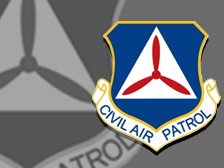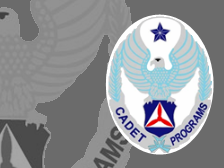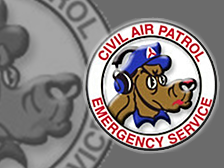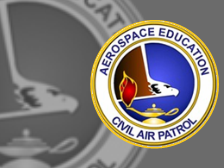
HISTORY
Civil Air Patrol was born one week prior to the Japanese attack on Pearl Harbor. Aviation advocate Gill Robb Wilson, along with New York Mayor Fiorello H. LaGuardia Director of the Office of Civilian Defense foresaw general aviation's potential to supplement America's military operations. CAP was created with Administrative Order 9, signed by LaGuardia on 1 December 1941 and published 8 December 1941. Major General John F. Curry was appointed as the first national commander. During WWII CAP assumed many missions including anti-submarine patrol and warfare, border patrols, and courier services. During World War II CAP's coastal patrol had flown 24 million miles, found 173 enemy U-boats, attacked 57, hit 10 and sank two, dropping a total of 83 bombs and depth charges throughout the conflict. By the end of the war, 64 CAP members had lost their lives in the line of duty.
After the war, a thankful nation understood that Civil Air Patrol could continue providing valuable services to both local and national agencies. On July 1, 1946, President Harry Truman signed Public Law 476 incorporating Civil Air Patrol as a benevolent, nonprofit organization. On May 26, 1948, Congress passed Public Law 557 permanently establishing Civil Air Patrol as the auxiliary of the new U.S. Air Force. Three primary mission areas were set forth at that time: aerospace education, cadet programs, and emergency services
Civil Air Patrol was born one week prior to the Japanese attack on Pearl Harbor. Aviation advocate Gill Robb Wilson, along with New York Mayor Fiorello H. LaGuardia Director of the Office of Civilian Defense foresaw general aviation's potential to supplement America's military operations. CAP was created with Administrative Order 9, signed by LaGuardia on 1 December 1941 and published 8 December 1941. Major General John F. Curry was appointed as the first national commander. During WWII CAP assumed many missions including anti-submarine patrol and warfare, border patrols, and courier services. During World War II CAP's coastal patrol had flown 24 million miles, found 173 enemy U-boats, attacked 57, hit 10 and sank two, dropping a total of 83 bombs and depth charges throughout the conflict. By the end of the war, 64 CAP members had lost their lives in the line of duty.
After the war, a thankful nation understood that Civil Air Patrol could continue providing valuable services to both local and national agencies. On July 1, 1946, President Harry Truman signed Public Law 476 incorporating Civil Air Patrol as a benevolent, nonprofit organization. On May 26, 1948, Congress passed Public Law 557 permanently establishing Civil Air Patrol as the auxiliary of the new U.S. Air Force. Three primary mission areas were set forth at that time: aerospace education, cadet programs, and emergency services



